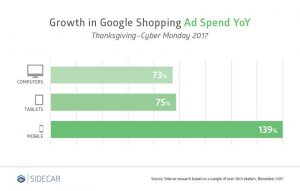New Hires: Stop Forcing Them to Ask Obvious Questions

Employee recruitment is tough enough. But, once you have an employment agreement for your hard-won talent, the rest of getting your new hires ready is easy, right?
Not so fast! In reality, the challenge of onboarding qualified talent is only beginning. In today’s tight labor market, there’s no guarantee you’ll retain your recent hires for long. Luckily, forward-thinking leaders and organizations can take action today that’ll help their new talent stick around.
Wise leaders take advantage of the first 90 days to set their employees up for success. Likewise, they realize that the window of opportunity to train, educate, and integrate your new team members is short.
Do it right, and your new hires will clearly understand how to be successful.
Skip this step, and you may be posting for their open position before their probationary period ends.
Add your name to the list of effective employers and consider these five onboarding strategies to boost your retention rate.
1. Make new hires feel welcome before their first day.
In all likelihood, you’ve been on the other side of an offer letter.
The days before your first day on-site are hectic. You feel both excitement and anticipation.
Now ride the wave of that feeling from the employer’s side. Let your new hire know you’re just as excited for their arrival, no matter your budget.
A robust, branded welcome pack is a memorable way to make a great first impression. Send a welcome letter, along with your swag, to their home address to help them reaffirm their choice.
If your crew operates on a leaner budget, a personalized email or letter can make new hires feel welcomed. Your efforts will help calm their first-day jitters and have them showing up ready to dive right in.
2. Standardize everything possible to create clarity.
Even if your newbie is thrilled to be starting their job at your company, the avalanche of new information can be headache-inducing.
Reduce this overwhelmed feeling by using standard operating procedures (SOPs) throughout your organization. Having SOPs in place is not only beneficial to new hires but can improve your overall operation.
Standardizing standard outputs or cyclical efforts will ensure you meet expectations every time.
Some projects may have compliance components that can’t be missed. You may assign others to different employees each year.
Using SOPs will guide your work and make training new hires relatively easy. In addition, all staffers can reference their SOPs to execute projects, making errors almost unheard of.
3. Pull back the curtain on how your business works.
Your new team member may be an expert on digital user experience, but what about the rest of your operation?
While minute details are not essential for every employee, working knowledge of your business is vital. And with staff members working on cross-functional teams, an understanding of the business and their colleagues’ work creates efficiency.
On project teams, colleagues will need to collaborate to address an organizational priority or problem. If there’s no base knowledge of the “how” of your business, time is wasted getting your teams up to speed.
Avoid this fate by creating a primer on your business practices and reinforcing it through conversations during onboarding.
4. Identify subject matter experts new hires can lean on.
It can be hard to identify the go-to people in key departments in organizations both large and small.
Publicizing your organizational chart isn’t enough. New team members won’t be able to pick out the colleagues they need to collaborate with. Plus, not every veteran team member is prepared for pop-ins from recent hires.
Identify key colleagues for newbies to meet one-on-one in their early days on the job. Train your team for what is expected of them and their engagement with new employees.
Include your employees in strategic hiring conversations where it makes sense — so they have a good idea of incoming talent. Equip them with written expectations covering initial meetings, training, and follow-ups.
Engaging veteran colleagues can add dimension to your onboarding process and reinforce your total retention initiative.
5. Prioritize culture and relationships.
You don’t have to fake culture for the sake of onboarding trends. Instead, do what successful organizations do by identifying your existing culture and celebrating what makes it unique.
Prepare for your new hires’ first day by stepping back to consider what needs to be acknowledged early on. For example, when team members are included in your culture, they’re more likely to feel valued beyond their business output.
Even at work, people want to belong. So make sure you’ve added your new team members to critical business functions and smaller, more ad-hoc events. Likewise, encourage leaders and colleagues alike to invite the newest employees out to coffee runs or lunch outings.
A little extra thought, care, and consideration can go a long way in creating a sense of belonging.
Remember that onboarding doesn’t end on the 90th day.
Cultivating a high-performing team doesn’t just happen in three months. It takes intentional effort, follow-up, and follow-through on the commitments your organization has made.
Take note of conversations about additional training, on-the-job shadowing, and longer-term goals. Add these takeaways to your new employees’ development path and work to incorporate them into their plan.
In conclusion, building out a robust onboarding program takes time, but the intentional effort is worth it.
Likewise, when you integrate your organization’s values and ensure your new colleagues understand your priorities, they buy into your mission.
And when they’re all-in on what you do, they’ll be happy to be part of driving your business forward.
Image Credit:
The post New Hires: Stop Forcing Them to Ask Obvious Questions appeared first on ReadWrite.
(51)








